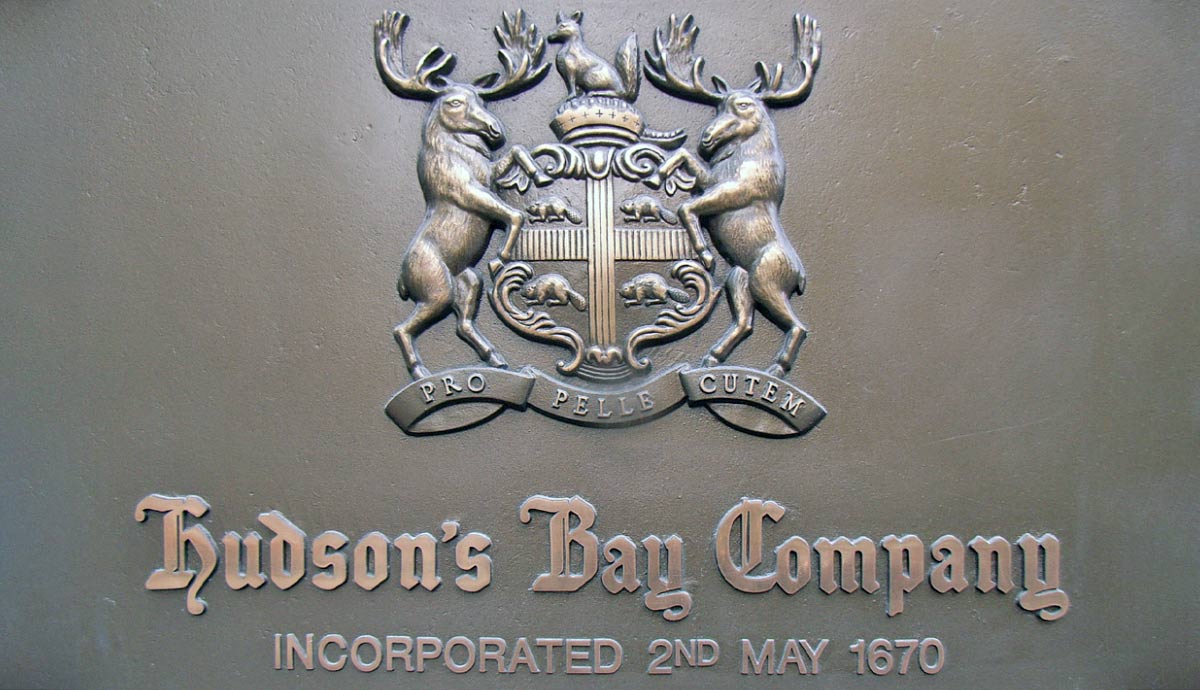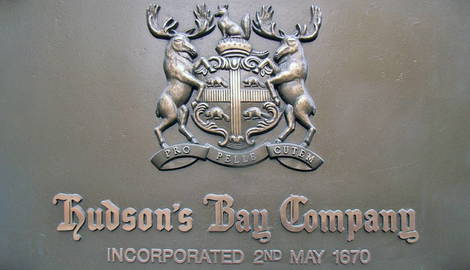
The Hudson’s Bay Company once claimed and traded on two-thirds of modern Canada. Indigenous fur trappers swapped pelts for commodities sourced on the world market, such as tobacco, guns, and wool. European hatters desperate for water-proof Beaver pelts effectively re-centered the North American fur trade on Hudson’s Bay. The story of the Hudson’s Bay Company is a transnational story, about Canada. But also, about the involvement of an English company in the colonization of huge swathes of North America, already populated by diverse indigenous communities.
Formation of the Hudson’s Bay Company

The story of the Hudson’s Bay Company (HBC) traces back to the exploits of French explorers and fur traders, Pierre-Esprit Radisson and Médard Chouart des Groseilliers. Spurred on by rumors of a “frozen sea” to the north – rich in furs – the pair proposed an expedition to what is now recognized as Hudson Bay to the authorities of New France.
In 1659, despite being denied French support the duo forged ahead. Returning to Montreal a year later with a bountiful collection of furs, they were arrested, fined, and had their collection confiscated. Undeterred, they sought the backing of English merchants from the Massachusetts Bay Colony (leading to a failed voyage) before decamping to London in 1665, where they secured the support of Prince Rupert and King Charles II. An inaugural English expedition set out in 1688 and King Charles bestowed a Royal Charter to the “Company of Adventurers of England Trading into Hudson’s Bay” in 1670.
Trade by Royal Charter

The HBC adopted the form of a joint-stock corporation, a prolific form of overseas expansion also exemplified by the East India Company (EIC). Like the EIC and other joint-stock companies created in the 16th and 17th centuries, the Hudsons’s Bay Company embodied British colonial interests. Under the auspices of its newfound Royal Charter, the HBC held monopoly rights to trade within – and colonize – the entirety of the drainage of Hudson’s Bay (more than one-third of all modern Canada). The area was promptly renamed “Ruperts Land” after Prince Rupert, co-founder of the HBC and the company’s first governor.
Critically, the charter claimed almost 1.5 million square kilometers of land inhabited by Inuit and First Nations peoples. While the charter explicitly prohibited claims on the territories of other “Christian” European powers (principally France), the sovereignty of the indigenous people that inhabited the land was effectively ignored.
The Fur Trade

Driven by European demand for luxury felt hats, the HBC constructed a network of outposts along the rivers that connected to the vast inland sea of Hudson’s Bay. These outposts, manned by officials and traders, became hubs where indigenous trappers exchanged premium Beaver pelts for various goods, including guns, wool, and tobacco.
For the first 200 years of the company’s existence, the Beaver served as the basic unit of accounting. In a bid to standardize trade, the HBC established its own currency known as “Made Beaver.” Henceforth goods were valued by placing them against the value of one prime Beaver pelt. In the first two-thirds of the 18th century alone, the HBC shipped close to 3 million Beaver pelts to European hat makers. All in all, the HBC dominated the global fur trade for over two centuries, its influence waning only with the eventual decline of fashionable fur in the 19th century.
The HBC as a Colonizing Power

The HBC not only facilitated British colonial business and trade but also disseminated British culture and values. Through the establishment of trading outposts, the company wove a complex network of social relations between its traders, and indigenous communities they engaged with. The most devastating impact was the transmission of diseases like smallpox and tuberculosis from company men to the local population. In some instances, not just individuals but entire communities and ways of life were wiped out by disease.
Initially, by maintaining relative distance from the dictates of the British crown, the HBC prioritized profit over any inclination to “civilize” their trading partners. However, this approach gradually shifted in the 1820s, with the British parliament tasked the company with settlement and trade west of the Rocky Mountains. By 1846, the HBC had founded a colony on Vancouver Island and helped make western Canada British. As the HBC expanded into British Columbia so did smallpox, to devastating effect.
The Hudson’s Bay Company Today

Over 350 years since its incorporation by Royal Charter, the present-day Hudson’s Bay Company has been transformed into one of Canada’s best-known retailers. In 1970, a new legal charter was drafted by Elizabeth II to officially transfer ownership of the company from the United Kingdom to Canada, establishing a new headquarters in Winnipeg, Manitoba. In its modern form as a department store chain, “The Bay” has consolidated itself as one of the most recognizable brands in Canada.
While much of the company’s checkered past has been obscured, the distinct stripes of its renowned “point blanket” – once traded for Beaver pelts – have been repackaged into a range of consumer goods. In 2006, an American private equity firm acquired the company in a bid to turn the HBC’s property portfolio into high-end office blocks. In 2022, work began to repurpose the historic (listed) HBC building in Winnipeg into a First Nations community center.










